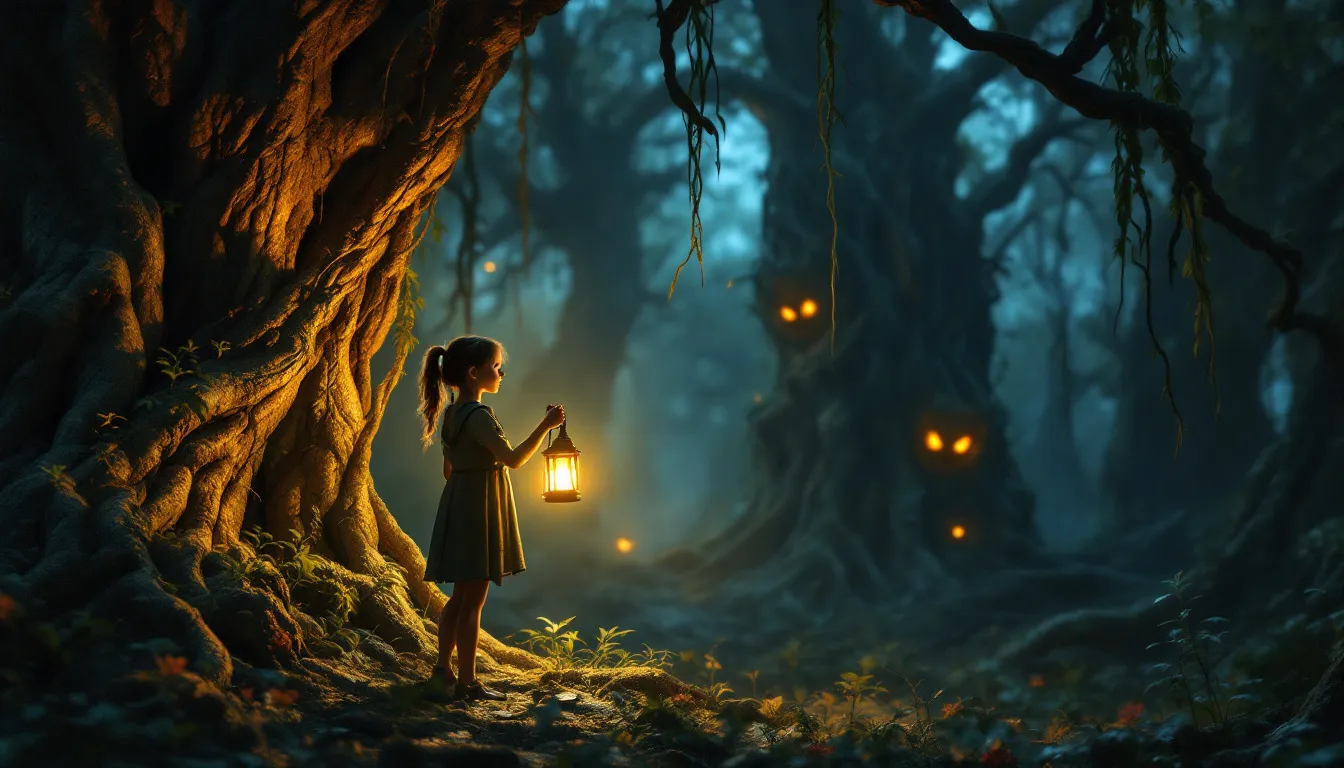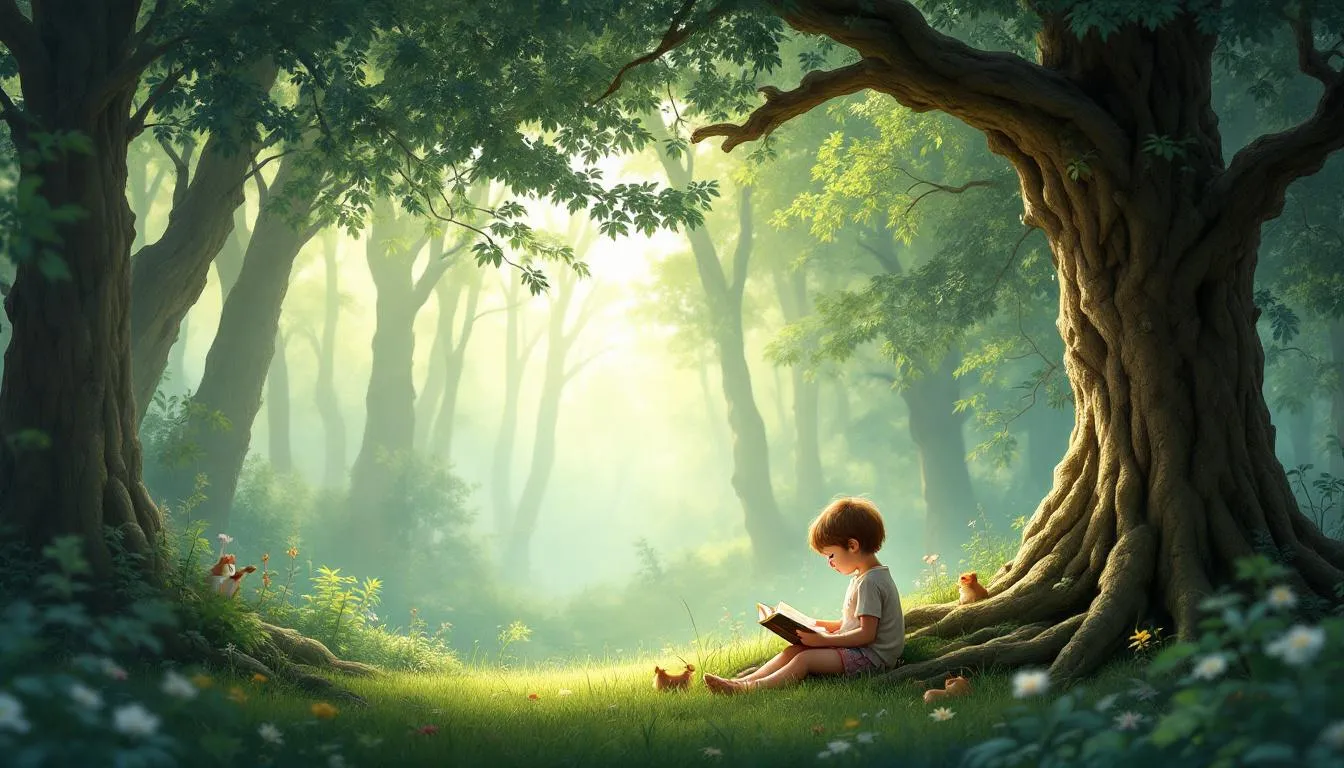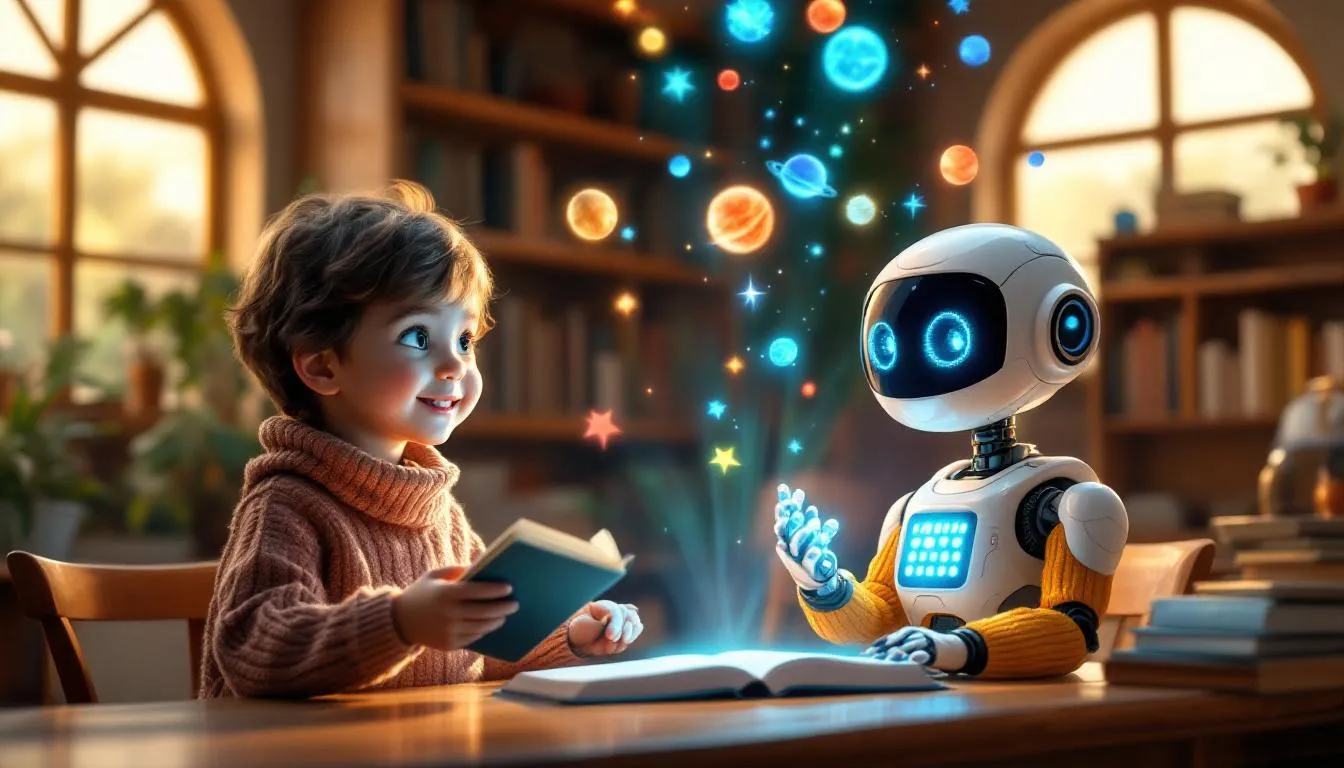Table of Contents
Quick Answer
Dark themes in children’s literature often involve fear, loss, or challenges that extend beyond everyday experiences. These themes provide young readers a safe space to explore complex emotions and situations, often culminating in a reassuring resolution. Dark themes captivate young readers by offering a chance to confront fears, understand intricate emotions, and witness characters overcoming obstacles, which can be both thrilling and comforting.
Let’s delve deeper into what these dark themes entail and how they are skillfully woven into stories for young audiences.
What Are Dark Themes in Children’s Literature?
Dark themes in children’s literature might initially seem ominous, like the start of a spooky bedtime story, but they’re more prevalent than one might expect. These themes often encompass fear, loss, danger, or moral dilemmas. Consider “Hansel and Gretel,” where children face the terrifying prospect of abandonment and encounter a witch. Or “Harry Potter,” where young wizards grapple with the complexities of good versus evil, loss, and sacrifice.
Historically, dark themes have been a staple in children’s books for centuries. Fairy tales by the Brothers Grimm and Hans Christian Andersen, often darker than their Disney adaptations, aimed to impart moral lessons through fear, teaching children about the consequences of straying from the path or trusting strangers.
In modern literature, authors like Roald Dahl have expertly integrated dark elements to create tension and excitement. Remember “Matilda”? The Trunchbull embodies fear and cruelty, yet Matilda’s triumph symbolizes resilience and empowerment.
These themes serve a dual purpose: captivating young minds while preparing them for real-world challenges. Children learn that although the world can be daunting, courage and kindness often prevail. This balance of thrill and resolution keeps kids turning pages, eager for more adventures and lessons.
As we explore why these darker themes entice young readers, it’s essential to consider the unique blend of excitement and reassurance they offer.
Why Do Kids Gravitate Towards Dark and Mature Themes?
Children have an uncanny ability to gravitate toward stories that send delightful shivers down their spines. The mysterious and the unknown draw them in like moths to a flame. But why? Psychologically, children are naturally curious, constantly trying to make sense of the world. Dark themes provide a sandbox for exploring emotions and scenarios they might not encounter daily.
Dark themes offer developmental benefits by allowing kids to engage with fear, curiosity, and empathy in a controlled environment. It’s akin to riding a roller coaster—a safe way to experience thrills and chills. When kids read about characters overcoming significant challenges, it helps build resilience, teaching them subconsciously that obstacles can be faced and conquered.
There’s also the undeniable allure of curiosity and thrill. Consider a child’s attraction to a story about a haunted house or a dragon’s lair. It’s the same reason they love playing hide-and-seek or telling ghost stories at sleepovers. Dark themes invite them to explore the boundaries of their imagination, all while nestled safely under the covers with a flashlight.
In my experience, reading darker tales with my children has sparked insightful discussions. These stories open doors to conversations about fear, bravery, and the power of kindness. Ensuring these themes are age-appropriate is crucial, leading us to consider how they are crafted for young audiences.
How Are Dark Themes Made Appropriate for Young Audiences?
Crafting dark themes into children’s literature is a delicate balancing act akin to walking a tightrope with a safety net. Authors skillfully weave these themes, ensuring they remain engaging yet suitable for young minds. One technique is using vivid yet age-appropriate symbolism. Instead of graphic depictions, stories employ metaphors or allegories. A dragon might symbolize an overwhelming challenge, with resolution achieved through wit or compassion rather than battle.
Creating relatable and resilient characters is another technique. These characters, while facing daunting obstacles, often possess qualities that children admire and can emulate. Consider the bravery and cleverness of characters like Harry Potter or Matilda, whose stories navigate darkness but find light at the end.
Resolution is crucial in making dark themes suitable for children. A story beginning with fear or uncertainty often concludes with reassurance and hope. Moral lessons are subtly interwoven, teaching children about courage, empathy, and the triumph of good over evil. In “The Lion, the Witch and the Wardrobe,” the Pevensie children learn about sacrifice and redemption, powerful lessons wrapped in an enchanting tale.
From my own parenting adventures, these stories have always been gateways to discussing real-life values and challenges. It’s fascinating to see how my children process and relate to the themes, sparking conversations that reveal their thoughts and feelings.
This natural progression leads us to the impact these themes have on a child’s emotional and psychological growth.
What Role Do Dark Themes Play in Child Development?
Dark themes in children’s literature play a pivotal role in fostering emotional growth and developing empathy. When young readers encounter characters facing fear, loss, or moral dilemmas, they don’t just follow a storyline—they step into the characters’ shoes, experiencing their struggles and triumphs. This immersive experience helps children understand and empathize with emotions they might not have personally encountered. For example, when reading about a character who loses a loved one, they learn to appreciate the depth of loss and subsequent healing, invaluable when facing their own challenges.
Beyond emotional growth, dark themes encourage critical thinking and problem-solving. They present young readers with complex situations requiring analysis and reflection. Take “Coraline,” where Coraline navigates an alternate world, using her wits and resourcefulness to save herself and her family. By following her journey, children learn to evaluate situations, consider consequences, and devise solutions—all crucial skills in real life.
I’ve witnessed this firsthand with my children, who often raise questions about a story’s moral dilemmas or a character’s decisions. Their curiosity leads to deep discussions, weighing different perspectives and outcomes. These moments transcend the story; they develop a mindset valuing empathy and strategic thinking.
These developmental benefits demonstrate how dark themes enrich a child’s growing mind. As we explore how these themes are perceived by guardians, it becomes evident that these stories are more than tales—they’re tools for growth.
How Do Parents and Educators View These Themes?
When it comes to dark themes in children’s literature, parents and educators find themselves balancing varied perspectives. Many adults recognize the value these themes bring, acknowledging their potential to teach resilience, empathy, and problem-solving. However, appropriateness remains a consideration, as not all dark themes suit every age group.
Some parents recall books from their childhood, like “The Chronicles of Narnia” or “The Witches,” appreciating how those stories helped them face fears and learn moral lessons. They often select similar books for their children, hoping to inspire the same growth and understanding. Conversely, some parents worry about the intensity of certain themes, fearing they might be overwhelming or frightening. It’s a delicate balance between protection and exposure.
Educators also hold diverse perspectives. Many teachers use darker-themed books as educational tools, creating lessons around courage, empathy, and ethical dilemmas. They observe how different children react to these themes, tailoring discussions to suit the class’s emotional maturity.
When selecting books, both parents and educators often consider:
- Age Appropriateness: Ensuring theme complexity matches the child’s age.
- Balanced Themes: Choosing stories with dark themes that have positive resolutions.
- Relatable Characters: Focusing on characters children can relate to and learn from.
Ultimately, the goal is to choose literature that challenges and nurtures, helping young minds grow. This thoughtful selection sets the stage for the next part of our discussion, where we draw key insights.
Key Takeaways
- Dark themes captivate children by allowing them to safely explore complex emotions and scenarios.
- Choose books with dark themes that match your child’s age and maturity level.
- Look for stories balancing dark themes with positive resolutions and relatable characters.
- Use these books as tools to discuss real-life values and challenges, fostering emotional growth and empathy.
- Remember, children’s literature is a powerful blend of education and entertainment, guiding young readers through their developmental journey.
Encourage your child’s curiosity and growth by selecting stories that challenge them to think and feel deeply. Your adventure together in the world of books is just beginning!
Looking for a truly unique story experience? KidTeller creates a personalized storybook where your child is the hero. Just upload a photo, and we’ll generate a custom book filled with adventures made especially for your toddler or young child – magical, memorable, and uniquely theirs.







